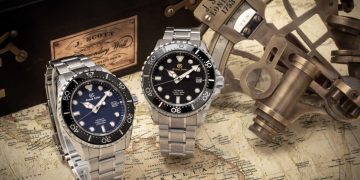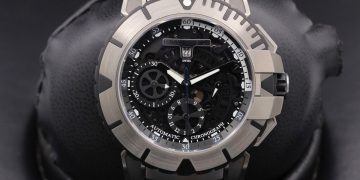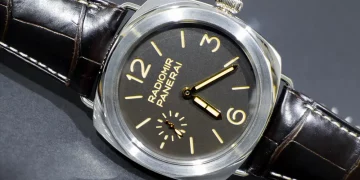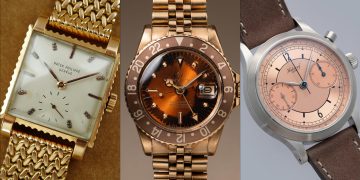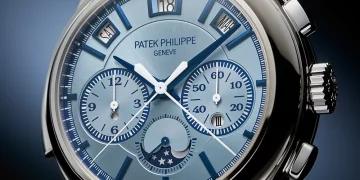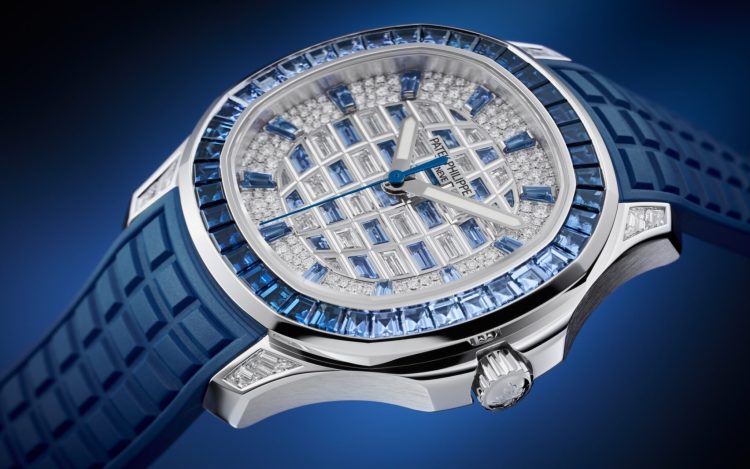Patek Philippe, one of the most revered and prestigious watchmakers in the world, is known for its exceptional craftsmanship, innovation, and rich history. The brand’s timepieces are some of the most expensive and exclusive in the world, representing the pinnacle of watchmaking artistry. But beneath its prestigious reputation lies a lesser-known and highly controversial chapter in the company’s history: the intentional destruction of its own watches in the 1930s. This surprising and scandalous decision would go on to shape the brand’s exclusivity and global status as one of the most sought-after watchmakers. In this article, we will uncover the reasons behind this drastic move and analyze how it contributed to Patek Philippe’s evolution into the luxury powerhouse it is today.
The Early Years of Patek Philippe: Crafting Timeless Masterpieces
Founded in 1839 by Antoine Norbert de Patek and François Czapek, Patek Philippe quickly made a name for itself by crafting precision timepieces for royalty, aristocrats, and discerning individuals. The brand’s commitment to superior craftsmanship, groundbreaking complications, and elegance allowed it to carve out a niche as a leader in luxury watchmaking.
Patek Philippe’s early innovations—such as the creation of the first Swiss wristwatch for women and the development of sophisticated complications like the perpetual calendar—set it apart from other watchmakers. Over the decades, the company garnered a reputation for creating timepieces that were both beautiful and mechanically complex. By the early 20th century, Patek Philippe had already achieved a level of exclusivity that many luxury brands would strive to replicate.
However, despite its success, Patek Philippe, like many other companies, was not immune to the broader economic challenges of the 1920s and 1930s. The Great Depression, which began in 1929, had far-reaching effects across industries, including luxury goods. Watches, once considered essential accessories for the wealthy, were now seen as indulgent items that many could no longer afford.
The Great Depression’s Impact on the Luxury Watch Industry
By the early 1930s, the world was in the grip of the Great Depression, and the global economy was experiencing one of its most severe recessions. The demand for luxury goods plummeted as high-net-worth individuals began tightening their belts. The consequences of the economic downturn affected watchmakers like Patek Philippe, whose clientele largely consisted of wealthy buyers.
Despite producing some of the finest timepieces in the world, Patek Philippe found itself struggling to move its inventory. The brand’s prestigious watches were not selling as quickly as they once had, and the company was faced with unsold stock sitting in its warehouses. This created a significant challenge for the brand, which prided itself on exclusivity and prestige.
With an excess of unsold inventory and the economic situation showing little sign of improvement, Patek Philippe’s executives were confronted with a difficult decision. The solution they would adopt would become one of the most controversial moves in watchmaking history: the deliberate destruction of unsold watches.
The Decision to Destroy Unsold Watches: A Controversial Move
In a bid to preserve its exclusivity and maintain its high-end image, Patek Philippe made a drastic decision in the 1930s: it would destroy its unsold watches. Rather than allowing these timepieces to sit unsold and potentially devalue the brand, the company took the extreme step of destroying its unsold inventory, thereby ensuring that no surplus stock would undermine its status as a luxury watchmaker.
The decision to destroy watches was not one made lightly. Patek Philippe’s executives understood the gravity of their actions, and the consequences for the company’s reputation could have been disastrous. But at the time, they believed that maintaining the perception of rarity and exclusivity was paramount to the brand’s survival. Patek Philippe’s philosophy was to ensure that only the most discerning customers had access to its timepieces, and by destroying unsold watches, the company hoped to create a sense of scarcity that would make their products even more desirable.
The practice of destroying unsold inventory was kept secret for many years, and only a few people in the company were aware of the extent of the destruction. The decision was controversial within the watchmaking industry, and even today, it remains a topic of much debate. Critics argue that it was a wasteful and reckless decision, while others believe it was a necessary move to safeguard the brand’s legacy.

The Aftermath: Patek Philippe’s Strategic Rebound
Despite the bold and controversial decision to destroy unsold watches, Patek Philippe’s strategy ultimately paid off. The brand’s reputation for exclusivity and rarity was solidified, and its timepieces became even more coveted by collectors and watch enthusiasts. The scarcity of Patek Philippe watches during the 1930s created an aura of mystique around the brand, and demand for its timepieces skyrocketed as the global economy began to recover in the years following the Depression.
In the aftermath of the destruction of unsold watches, Patek Philippe continued to innovate and push the boundaries of horological craftsmanship. The company introduced groundbreaking complications, such as the famous Calatrava and Nautilus models, which would go on to become some of the most iconic and recognizable watches in history.
Patek Philippe’s unwavering commitment to excellence and its ability to adapt to changing market conditions ensured its survival through the difficult years of the Depression. The decision to destroy unsold inventory was, in hindsight, a strategic move that helped the brand emerge stronger and more prestigious than ever before.
How the Destruction of Watches Shaped Patek Philippe’s Exclusivity Today
The decision to destroy unsold watches in the 1930s played a pivotal role in shaping Patek Philippe’s reputation as one of the most exclusive and prestigious watch brands in the world. Today, the brand is synonymous with rarity, luxury, and prestige, and its timepieces are highly sought after by collectors and enthusiasts alike.
The destruction of inventory during the Great Depression helped create an air of scarcity around Patek Philippe watches, making them even more desirable. The brand’s commitment to exclusivity ensured that only a select few could own a Patek Philippe timepiece, and this sense of rarity continues to define the brand’s identity today.
In the modern era, Patek Philippe maintains its exclusivity by carefully managing production levels and ensuring that demand for its watches consistently outstrips supply. This strategy of controlled scarcity has helped the brand retain its status as one of the most coveted names in the world of luxury watches. The Patek Philippe Calatrava, Nautilus, and other iconic models continue to command high prices at auctions and are often seen as symbols of wealth and success.
The Legacy of Patek Philippe’s Controversial Decision
The decision to destroy unsold watches in the 1930s is just one chapter in the storied history of Patek Philippe. While the move was undoubtedly controversial, it ultimately helped shape the brand into the luxury powerhouse it is today. Patek Philippe’s commitment to rarity, quality, and exclusivity has ensured its place at the forefront of the watchmaking world.
In retrospect, the destruction of watches during the Depression is seen by some as a masterstroke of marketing and brand management. It reinforced Patek Philippe’s image as a brand that was above the mass market, focusing only on the most discerning customers. This exclusivity, combined with the brand’s exceptional craftsmanship, has made Patek Philippe watches some of the most coveted and valuable timepieces in the world.
Today, Patek Philippe is a symbol of luxury, heritage, and prestige. The brand’s watches are not just instruments for telling time—they are expressions of wealth, success, and refined taste. The decision made in the 1930s may have been controversial at the time, but it played a crucial role in ensuring Patek Philippe’s continued success and dominance in the world of luxury watchmaking.
Conclusion
The secret scandal of Patek Philippe’s destruction of unsold watches in the 1930s remains one of the most controversial and fascinating stories in the history of watchmaking. While the decision to destroy inventory was born out of necessity during a time of economic hardship, it ultimately helped define the brand’s exclusivity and cemented its reputation as a symbol of luxury and rarity. Today, Patek Philippe continues to lead the watchmaking industry with its commitment to craftsmanship, innovation, and prestige, and the brand’s story remains an enduring testament to the power of exclusivity in shaping the future of luxury brands.


